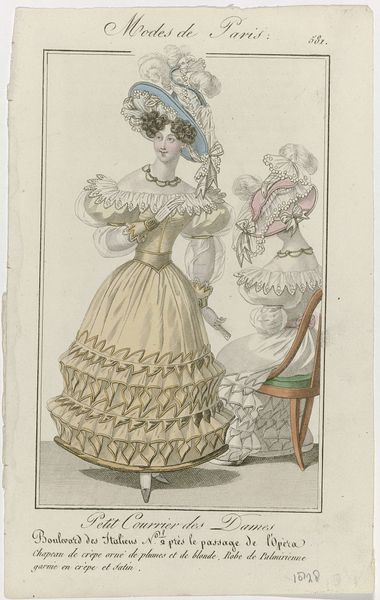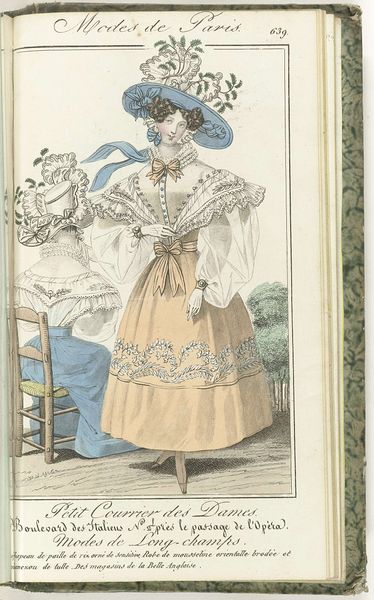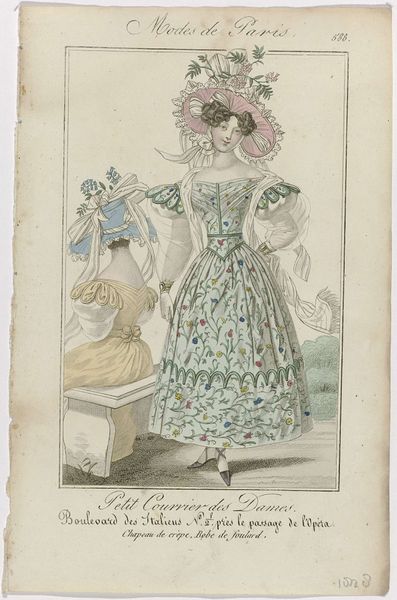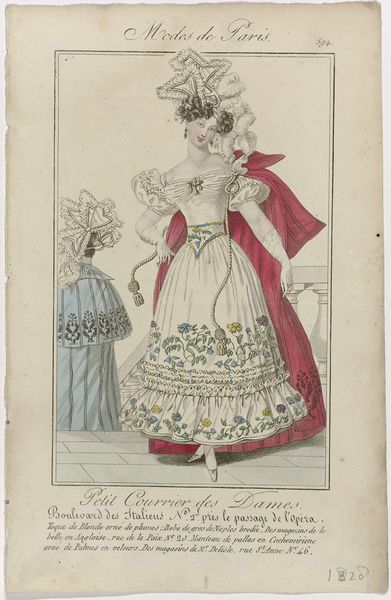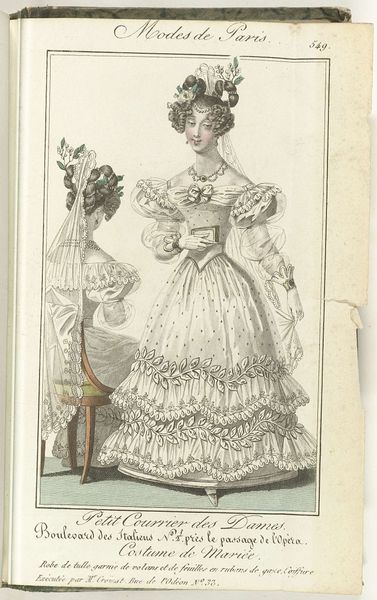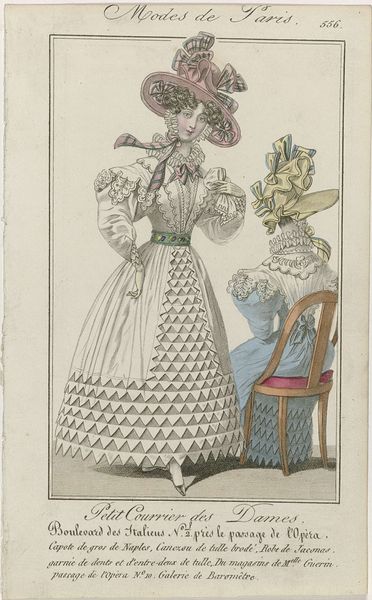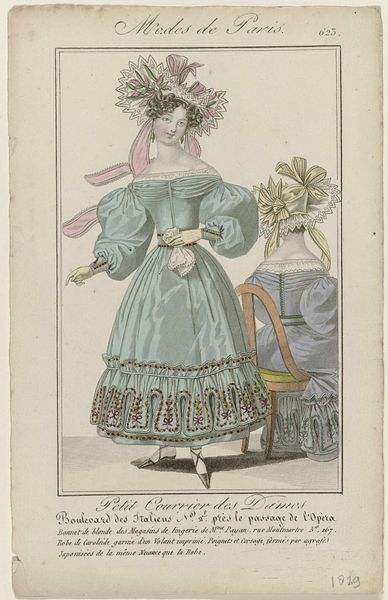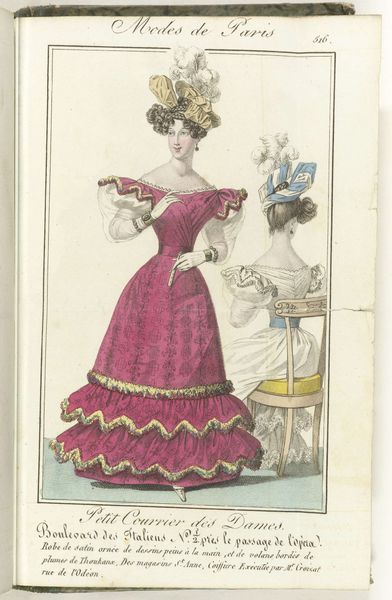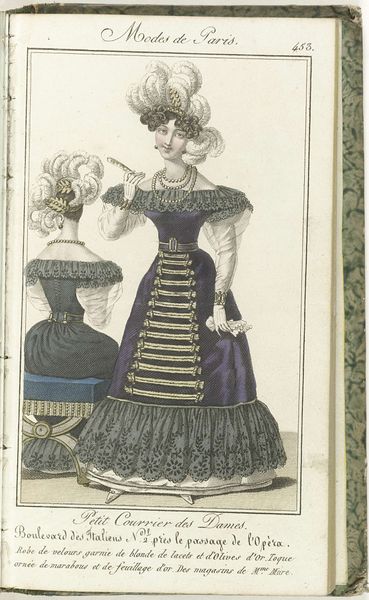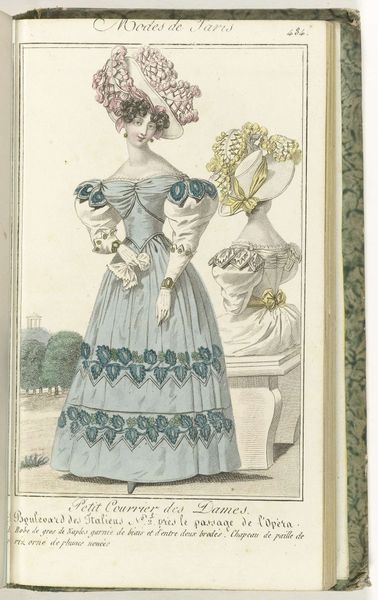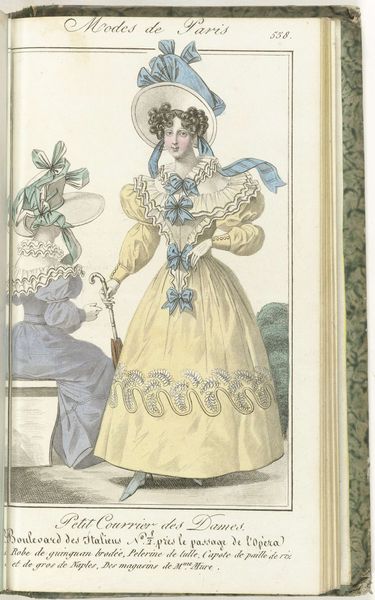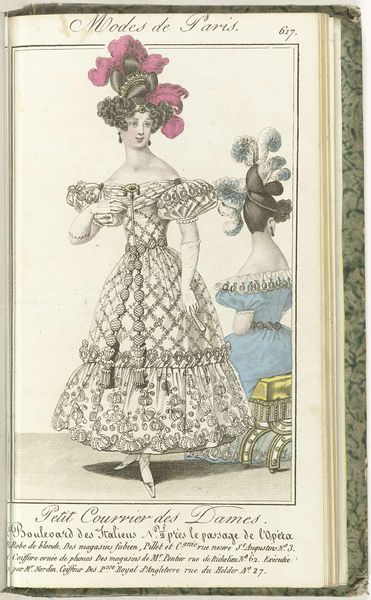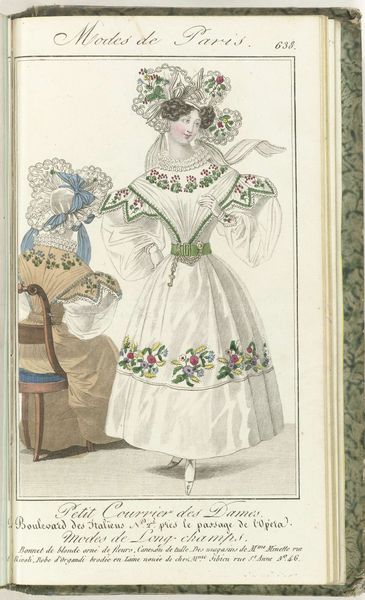
Petit Courrier des Dames, 28 février 1829, No. 621 : Turban grec... 1829
0:00
0:00
drawing, print, watercolor
#
portrait
#
drawing
# print
#
pen illustration
#
watercolor
#
romanticism
#
watercolour illustration
#
dress
Dimensions: height 201 mm, width 113 mm
Copyright: Rijks Museum: Open Domain
Curator: Looking at this illustration, it feels as though we’re being given an exclusive peek into the intimate world of Parisian fashion in 1829. The work, titled "Petit Courrier des Dames, 28 février 1829, No. 621: Turban grec...", is currently housed at the Rijksmuseum and showcases the romantic sensibilities of the time. It is constructed through a blend of drawing, watercolor and print techniques. Editor: My initial reaction is one of gentle amusement. The scale is relatively small, like a page torn from a cherished diary. I find the image charming yet perhaps overly ornate with ruffles, ribbons and the towering feather headpiece. Curator: The very title draws attention to cultural influences—in this instance, an idealized “Greek” style, likely adapted through the lens of Western European fashion and aesthetics. How does the materiality of fashion contribute to both reinforcing and perhaps subverting notions of social status and identity for women? The magazine itself functioned as a vehicle for disseminating bourgeois values. Editor: Considering the materials available then, such garments would have been incredibly labour-intensive, requiring skilled seamstresses and access to fine textiles. The detail suggests artisanal techniques, raising questions about the production chain. These were valuable materials consumed to project affluence and aspirations. I imagine how heavy these pieces must be to wear. Curator: Indeed, the image's creation is just as revealing as what it depicts. What can a feminist lens contribute? We might examine the social conditions which made such magazines possible. And the circulation of images like these within a larger media landscape raises fascinating questions about the power dynamics at play. It would be worthwhile researching how gender shaped access to these trends in design and making across different socioeconomic boundaries during the Romantic era. Editor: For me, understanding the craftsmanship and the social web woven around these items offers a richer sense of the scene than a purely aesthetic approach. The details like the print-making involved or the watercolour applied offer subtle information about labour, consumption, and ultimately what drove these creative processes and outputs during 19th century European publishing and textile production. Curator: A fruitful examination, highlighting intersectional factors! Editor: Absolutely. Thank you for offering a perspective on the image and the women behind it.
Comments
No comments
Be the first to comment and join the conversation on the ultimate creative platform.
